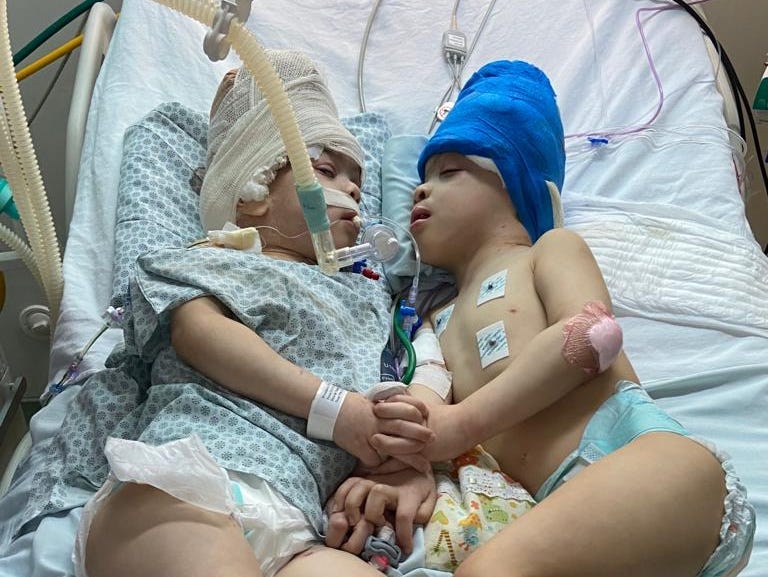- An international surgical team successfully separated twin boys who were joined at the head.
- Conjoined twins are extremely rare, and less than 5% of cases involve fused skulls.
- The final separation surgery took 27 hours.
Surgeons in Brazil successfully separated 3-year-old twin boys who shared conjoined brains, making them the oldest patients to have survived the complex procedure.
An international surgical team spent months practicing in a virtual operating room before they began working on the twins, according to the charity Gemini Untwined, which funded the operation.
In all, twins Bernardo and Arthur Lima underwent seven surgeries, the last of which spanned 27 hours. Nearly 100 medical staff worked on the boys, including an expert surgeon from abroad.
Lead surgeon Noor ul Owase Jeelani, who traveled from the UK to Rio de Janeiro for the procedure, told the BBC he was "absolutely shattered" after the lengthy final operation, but it was well worth it to see the family's reaction.
Jeelani founded Gemini Untwined in 2018 with the goal of treating craniopagus twins, or twins conjoined at the skull. He led five other separations in Pakistan, Sudan, Israel, and Turkey before the surgery in Brazil, which was the most high-risk procedure by far.
The boys' age and anatomy made for a highly complex procedure
Conjoined twins are extremely rare — about 1 in 60,000 births result in a set of babies attached at the chest, hips, or head, according to the Children's Hospital of Philadelphia. Most conjoined pairs are born female and stillborn, so the Lima twins already defied the odds from birth.
Between two and 5% of conjoined twin cases involve fused skulls or brains, based on estimates from CHOP and Gemini Untwined. Craniopagus twins rarely survive past age 10, and 78% die before their first birthdays, according to Gemini Untwined.
At nearly four years old, Bernardo and Arthur Lima are the oldest craniophagus twins to have been separated.
The boys' attachment at the head meant most of their vital organs were separate, giving them a better chance at survival after surgery. However, they shared vital veins in the brain that had to be carefully separated, and previous attempts had left tricky scar tissue that surgeons would have to work around.
Practicing the surgery in virtual reality gave the team time to explore the twins' anatomy without risking the boys' lives, Jeelani told the BBC. They created VR projections based on CT and MRI brain scans.
"In some ways these operations are considered the hardest of our time, and to do it in virtual reality was just really man-on-Mars stuff," he said.
After months of practice and hours of surgery, the twins are recovering well in hospital, Jeelani said. As with many conjoined twins cases, the boys' blood pressures and heart rates spiked after the separation surgery, but returned to normal when they were reunited and touched hands four days later.

